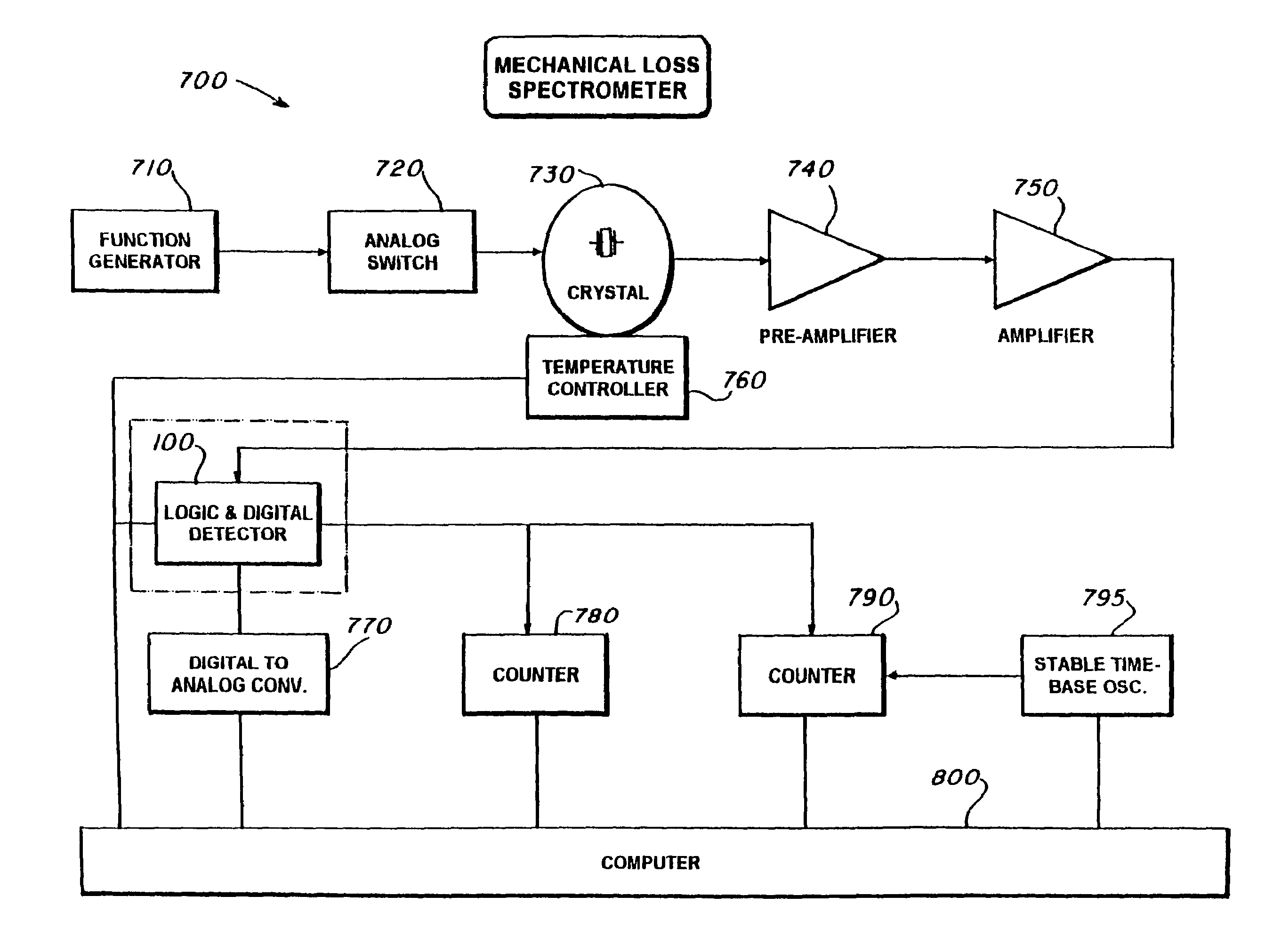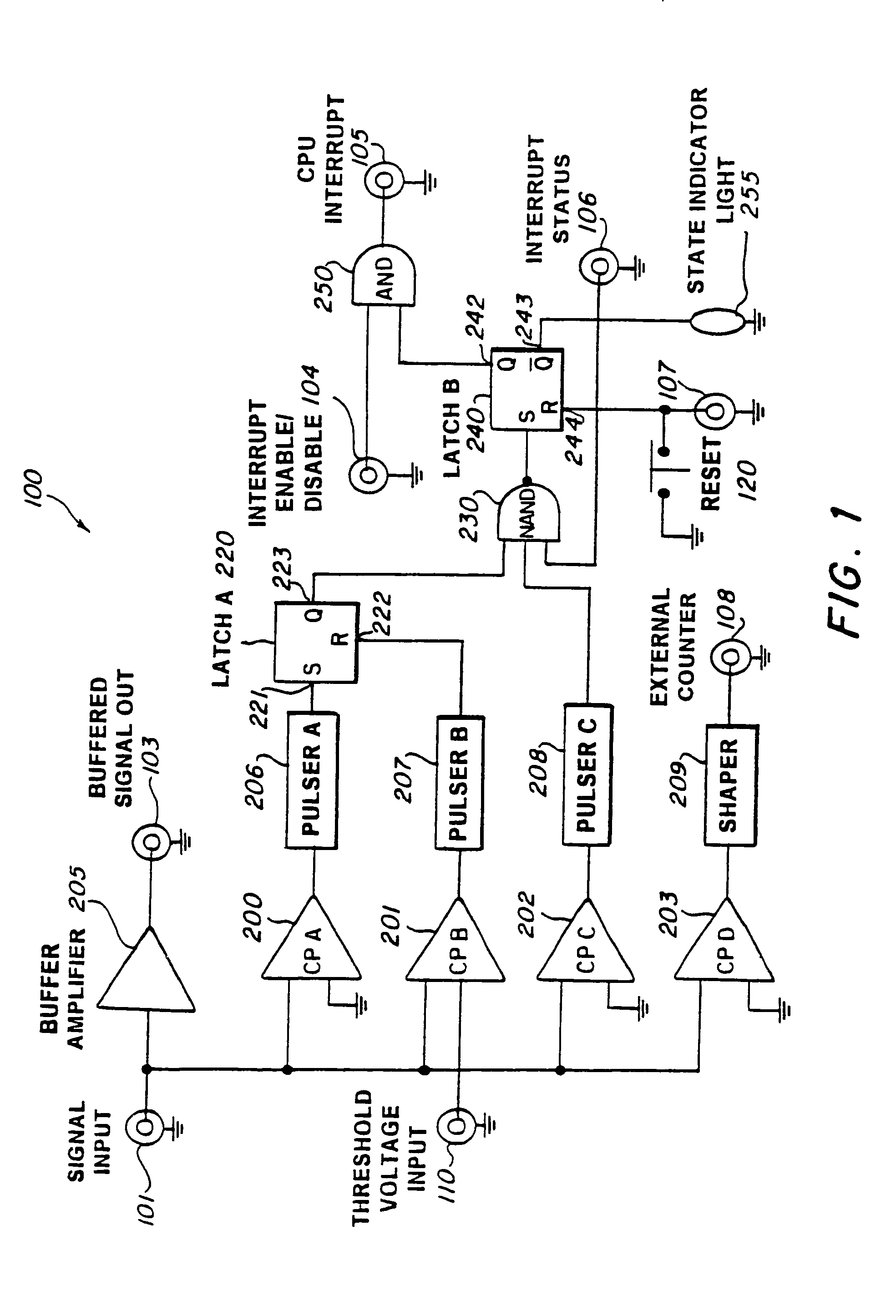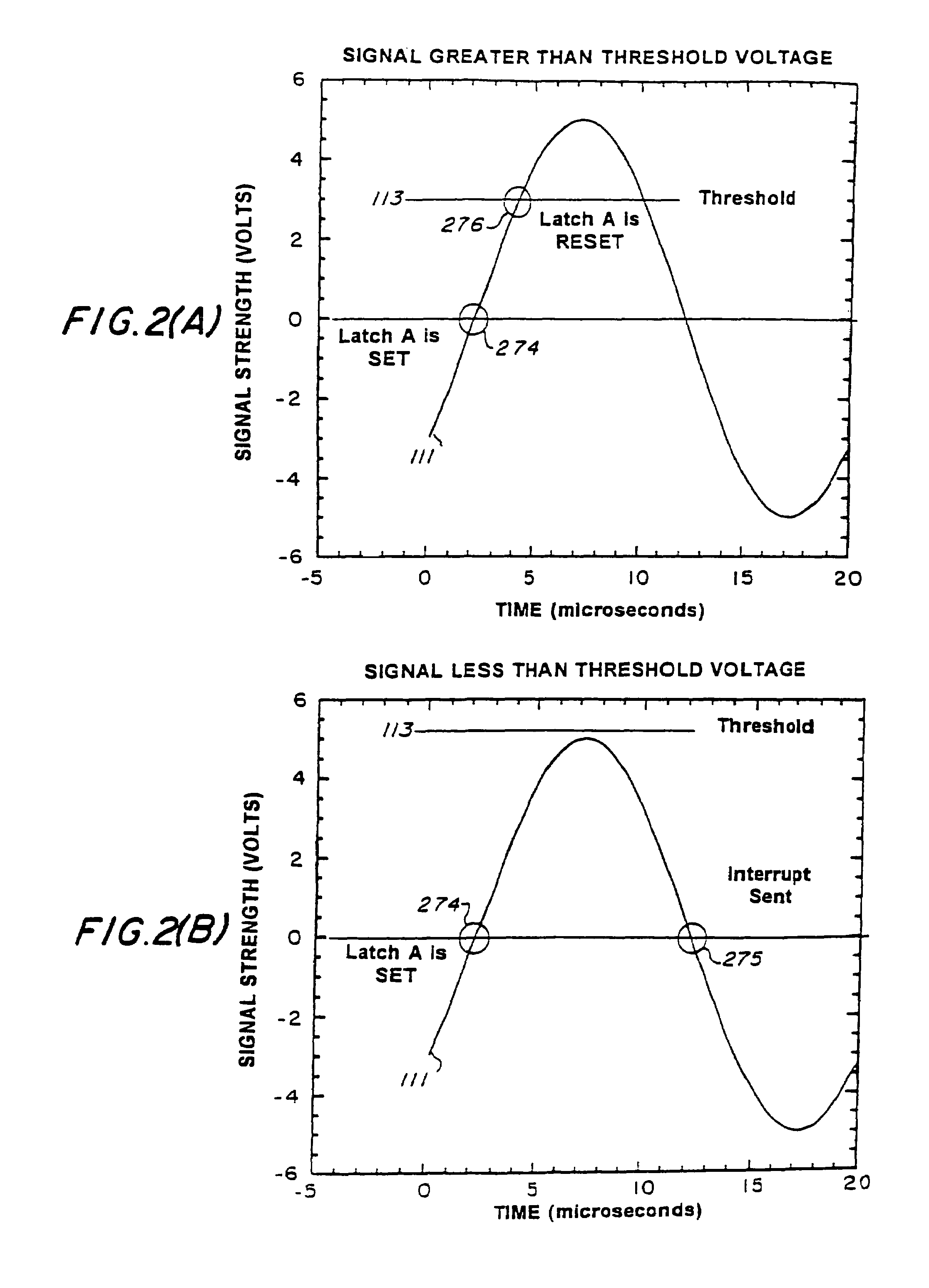Digital envelope detector
a detector and digital technology, applied in the direction of instruments, measurement using digital techniques, measurement arrangements for variables, etc., can solve the problems of limited measurement accuracy, limited accuracy of measurement, and first method which employs a diode detector circuit, and achieves efficient and accurate measurement of the envelope of an ac signal.
- Summary
- Abstract
- Description
- Claims
- Application Information
AI Technical Summary
Benefits of technology
Problems solved by technology
Method used
Image
Examples
Embodiment Construction
[0024]The disclosed system enables the user to measure peak amplitudes of an electrical signal as a function of time both rapidly and with high precision. The system in its preferred embodiment comprises the disclosed envelope detector device, a CPU, and accompanying software which together are integrated into a system capable of making very accurate envelope measurements.
[0025]In brief, the basic concept this system employs is as follows. A multitude of reference points or threshold voltages are selected by the user or CPU. While the disclosed system is described by explaining its operation when it is applied to obtain the envelope of a monotonically decreasing signal, the technique is not limited to this particular application.
[0026]If the method is applied to obtain the envelope of a decaying sinusoidal signal the output is an array of numbers, cycles and peak amplitudes. The threshold voltages are selected from a range within the maximum amplitude of the oscillating sample. The ...
PUM
 Login to View More
Login to View More Abstract
Description
Claims
Application Information
 Login to View More
Login to View More - R&D
- Intellectual Property
- Life Sciences
- Materials
- Tech Scout
- Unparalleled Data Quality
- Higher Quality Content
- 60% Fewer Hallucinations
Browse by: Latest US Patents, China's latest patents, Technical Efficacy Thesaurus, Application Domain, Technology Topic, Popular Technical Reports.
© 2025 PatSnap. All rights reserved.Legal|Privacy policy|Modern Slavery Act Transparency Statement|Sitemap|About US| Contact US: help@patsnap.com



